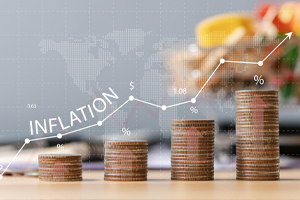During periods of high inflation, the prices of goods and services increase as does the demand for credit, which causes interest rates to rise. Regardless of the financial situation, inflation indirectly impacts consumer debt. Lenders benefit when interest rates go up and the demand for credit increases, while consumers benefit by paying lenders back with money that is worth less than when it was borrowed. The rise in interest rates contributes to consumer debt balances which have been increasing over the last two years and surpassed $1 trillion in 2023.
Credit utilization ratio
For consumers that are cash-constrained and slower to pay off debt, the nature of revolving debt can make it easy to acquire large balances. How well you manage your revolving debt is measured by your credit utilization ratio. Revolving credit accounts that are included in the calculation are credit cards, home equity lines, and personal lines of credit. While inflation does not directly impact credit, it does impact purchasing power for goods and services, making it harder for consumers to pay down debt.
Credit score
Credit scores measure consumer creditworthiness. Factors, including credit mix, types of credit, amounts owed, payment history, and credit utilization, affect credit scores. Lenders are most likely to approve loans for consumers with higher credit scores and decline consumers with lower credit scores. What’s more, consumers with higher credit scores can obtain better interest rates, which can save money over time. While inflation has no direct effect on credit scores, it can negatively impact consumer financial health by missed or late payments, the need for new credit, and the amount of credit available.
Late fees
Inflation and interest rates generally move in the same direction. If wages remain the same during periods of inflation, there is less money to pay down debt. In addition, consumers may use more credit to make purchases which can result in paying more interest and increasing the debt balance. Not only may it take longer to pay down what is owed, but payments may be missed or arrive late. The interest rates for credit cards increase as does the prime rate (the underlying index for most credit cards, lines of credit, and personal and auto loans). Recently, the Consumer Financial Protection Bureau (CFPB) reduced how much credit cards can charge in late fees by capping fees for the biggest credit card issuers. This ban on excessive credit card late fees could bring savings to some consumers.
Financial stress
Inflation measures the decrease in the buying power of the dollar, while cost of living measures the change in pricing for necessities like food, housing, and healthcare. The effects of cost of living are felt by consumers in daily life. As the prices of goods increase, consumers may put off major purchases or look for cheaper substitutes. Because inflation increases the cost of living, financial pressure can rise for consumers with debt balances that can’t be repaid. The uncertainty in the world, rising prices, and inflation contribute to financial stress. It is possible for consumers to manage finances through periods of high inflation by focusing on where and how they spend their money.


